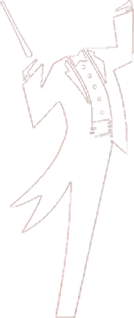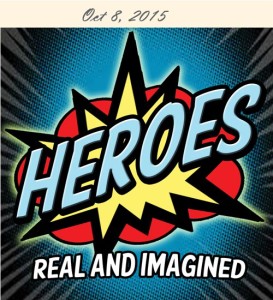[su_row]
Concert October 8, 2015 at 7:30 PM
Wine & Cheese Reception 6:30 pm
Cailloux Theater – Kerrville, Texas
[/su_column]
[su_column size=”1/2″]
A musical celebration of the human spirit!
Our first concert of the 2015-16 season follows a theme that is as inspiring as it is timeless; we are featuring music that takes us to the core of heroism.
Evening’s Performances
Fanfare for the Common Man Copland
Fanfare for the Uncommon Woman Tower
Symphony No. 3 “Heroic” Beethoven
Halo, Kingdom Hearts Arr. Ford
Superman March Williams
Armed Forces Salute Arr. Lowden
To learn more about this concert, see the Conductor Letter and Program Notes below.
[/su_column]
[/su_row]
Conductor Letter
[su_row]
[su_column size=”1/2″]Our first concert of the 2015-16 season follows a theme that is as inspiring as it is timeless; we are featuring music that takes us to the core of heroism. We see many conversations about heroes and those who perform heroic deeds. Often, these are ordinary people thrust into situations where their actions become life-changing for themselves and others. Many times heroes are men and women whose very occupations place them in dangerous and life-saving scenarios.
Our October 8th concert will open, as all our programs do, with the Star Spangled Banner. While this formality may seem commonplace, it is significant to our heroic theme. Two famous fanfares celebrate heroic men and women: those by Aaron Copland and Joan Tower. The centerpiece of our concert is Beethoven’s epic Symphony No. 3 in Eb entitled Heroic. This symphony has been featured in prominent celebrations and its 2nd movement (Marcia Funebre) has been performed in honor of some of history’s greatest figures including Franklin D. Roosevelt, John F. Kennedy, and the eleven Israeli athletes killed at the 1972 Olympic Games.
[/su_column]
[su_column size=”1/2″]
Some great orchestral music brings to life superheroes such as those found in video games such as Halo and Kingdom Hearts and the fantastic Superman, the Grammy award winning score by the American legendary composer John Williams. We will end the concert returning to honor our men and women in the armed forces with the Armed Forces Salute.
The Symphony of the Hills will also perform these works for the annual children’s concerts on October 8. Almost 1,600 children will be present in the Cailloux Theater to help celebrate heroism through some of the finest music written for symphony orchestra.
If you enjoy this Symphony of the Hills program, I hope you will join concert sponsor Rachel Fitch and others throughout the season whose heroic support keeps symphonic orchestral music vibrant in our community.
Thank you for your attendance and support!
Gene Dowdy
Conductor & Artistic Director
[/su_column]
[/su_row]
Program Notes[su_row]
[su_column size=”1/2″]
Fanfare for the Common Man; Aaron Copland
This piece, commissioned for the Cleveland Symphony Orchestra in 1942, also comprises the main theme of the 4th movement of the composer’s Symphony No. 3.
The Common Man theme was a recurring one during this period, perhaps reflecting the tough times and those who endured during the Great Depression, but also commemorating those individuals who were joining the military to fight in WWII.
The contemporaneity of the composition is strongly evidenced in the Rolling Stones Tour of the Americas ’75, where they incorporated an excerpt of Fanfare for the Common Man to open their Tour of Europe ’76. Further, the American rock band Styx has also used the Copland piece. Their 1972 eponymous debut album opens with a suite called Movement for the Common Man.
Fanfare for the Uncommon Woman; Joan Tower
Joan Tower, Lauded by the New Yorker as “one of the most successful woman composers of all time,” wrote this Fanfare in 1987 and totally revised it in 1997. Considered by many to be something of a response to Aaron Copland’s Fanfare for the Common Man, this composition has been performed worldwide by over 500 ensembles, a tribute to women who were (and are) risk-takers and adventurers.
Symphony No. 3 Eroica in e-flat major; Ludwig von Beethoven
Allegro con brio
Allegro vivace
Allegro molto
When he was in his mid-20’s Beethoven began to experience a ringing or buzzing in his ears, with which he suffered for two or three years before seeking treatment. Early treatments were not effective, and Beethoven finally sought the council of Doctor Johann Schmid, who recommended that young Beethoven rest his hearing and relax in the village of Heiligenstadt, on the outskirts of Vienna. Here, in a little village both restful and conducive to work, Beethoven suffered anguish about his health and mortality. He was compelled to draft a last will and testament, known as the Heiligenstadt Testament. Inseparably tied to these psychological changes, his musical composition underwent a sudden and drastic stylistic shift to bolder, more daring compositions, for that time.
The origin of the title Eroica is conjectured to be tied to Beethoven’s then high esteem for Napoleon Bonaparte who at the time was First Consul. Indeed, Beethoven initially titled the piece “Bonaparte.” Beethoven’s esteem subsequently evaporated and turned to rage when Napoleon declared himself Emperor. This story is part of Beethoven lore; the exact naming of the Symphony with its present title will probably never be established. Beethoven sold rights to the piece and dedicated it under the title Eroica to Joseph Franz Maximilian, 7th Prince Lobkowitz of Vienna, who paid Beethoven 100 Gulden in royalties in 1803.
[/su_column]
[su_column size=”1/2″]
On April 7, 1805, the general public heard the Eroica for the first time at the Theatre An Der Wien. It was billed as “a grand symphony in D-sharp [E-flat].” As might be expected of a first hearing of such a bold new work, reaction of the public was mixed. Being part of a longer program that evening, and with Eroica longer than any symphony heard up to that time, the situation prompted one concert goer to yell out, “I’ll give another Kreutzer if it will just stop.”
A German newspaper article describing the piece declares: “a daring, wild fantasia, of inordinate length and extreme difficulty of execution. There is no lack of striking and beautiful passages in which the force and talent of the author are obvious; but . . . the work seems often to lose itself in utter confusion. [This] writer belongs to Beethoven’s warmest admirers, but in the present work he finds very much that is odd and harsh, enormously increasing the difficulty of comprehending the music, and obscuring its unity almost entirely.”
The first movement, a powerfully scored Allegro in ¾ time, is in sonata form. The movement opens with two large E-flat major chords, played by the whole orchestra, thus firmly establishing the tonality of the movement. Like the rest of the movement, the development is characterized by remarkable harmonic and rhythmic tension, from dissonant chords and long passages of syncopated rhythm. Most remarkable, Beethoven introduces a new theme in the development section, thus breaking with the tradition of classical.
This delightful piece of music has been heard by millions of concert goers and joins the pantheon of music written by one of the greatest composers of all time.
Halo / Kingdom Hearts; Martin O’Donnell & Michael Salvatori/Yoko Shimomura
Composers in recent years have turned their attention to the video and computer game arena for inspiration in writing heroic music, similar to composers of great film scores. The orchestral music to the award-winning video game series entitled Halo that accompanies the game by the same name is powerful and evokes images of ancient warriors and battle through the use of heavy drum strikes and chant-like voicing in the strings, winds and brass. In the video game Kingdom Hearts, composer Shimomura presents sweeping melody lines that are both beautiful and poignant. This game is unique in that original Walt Disney characters make appearances throughout.
[/su_column]
[/su_row]


